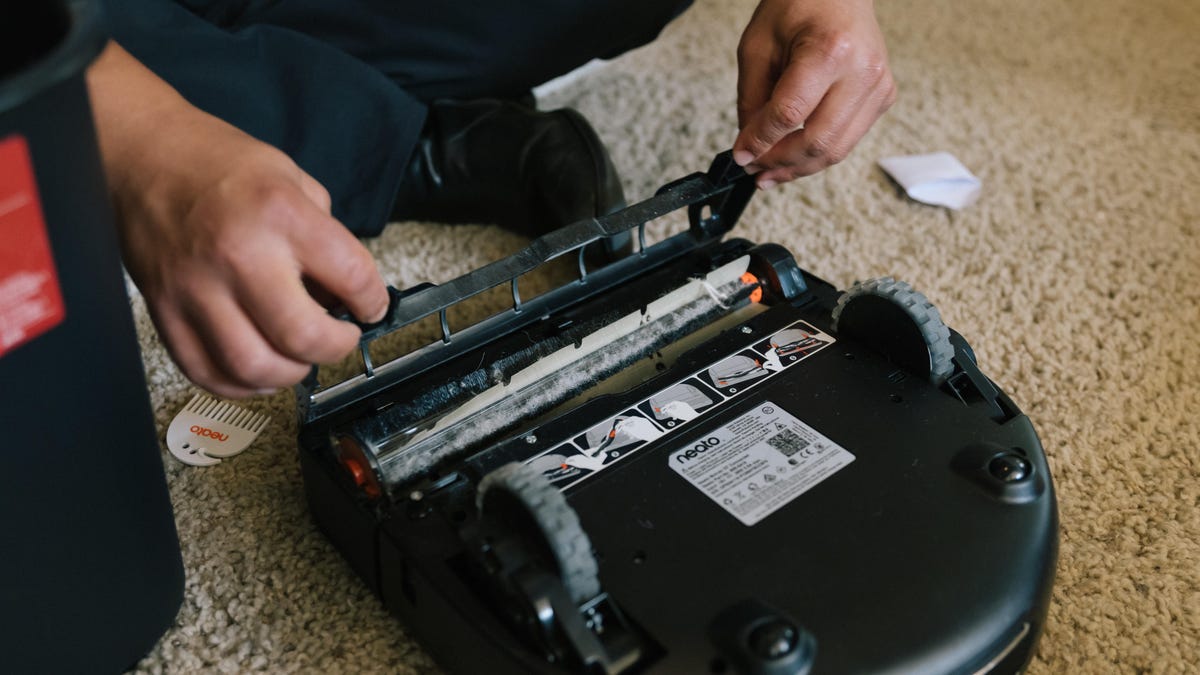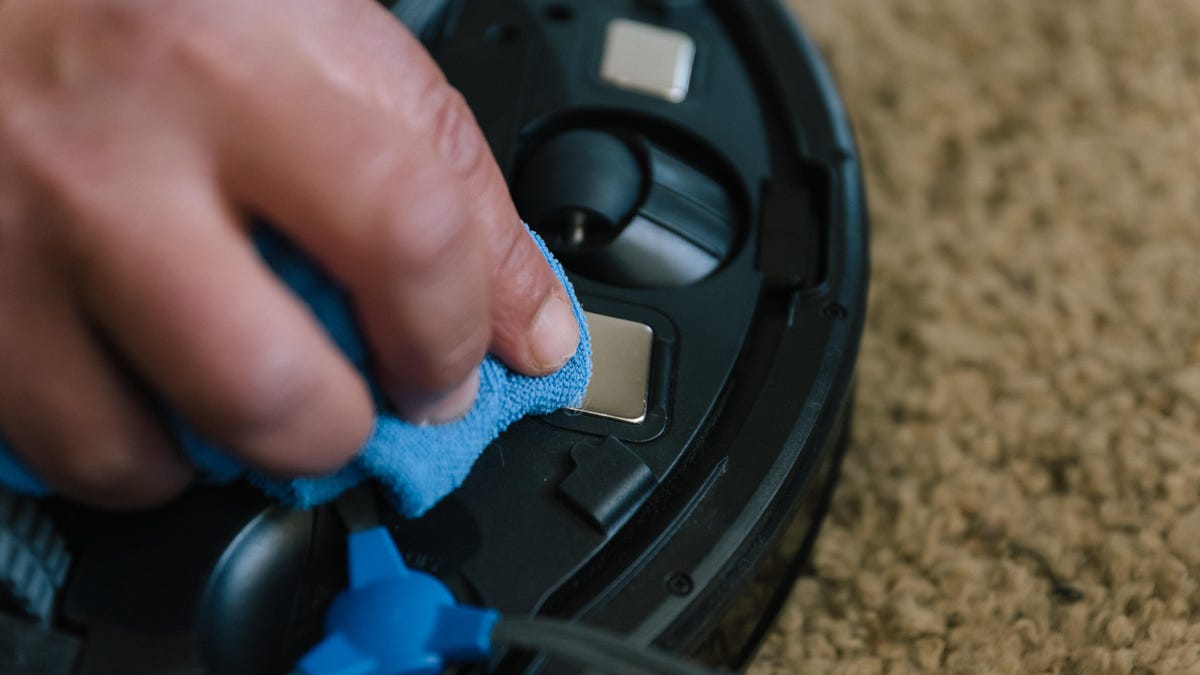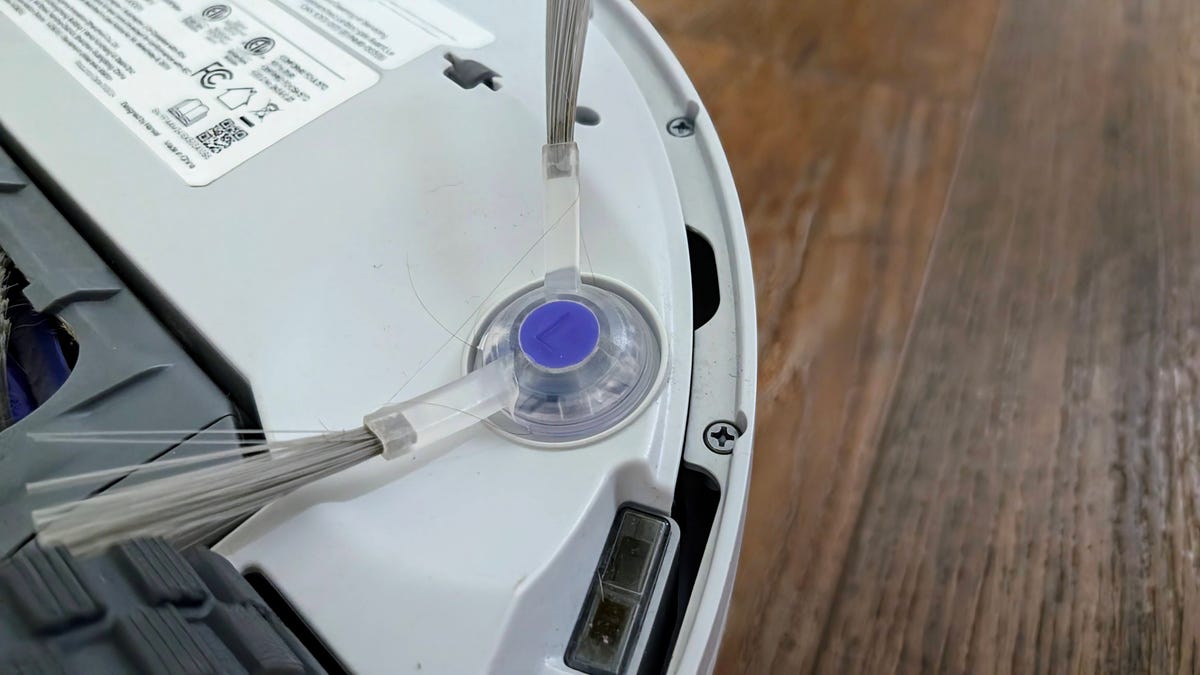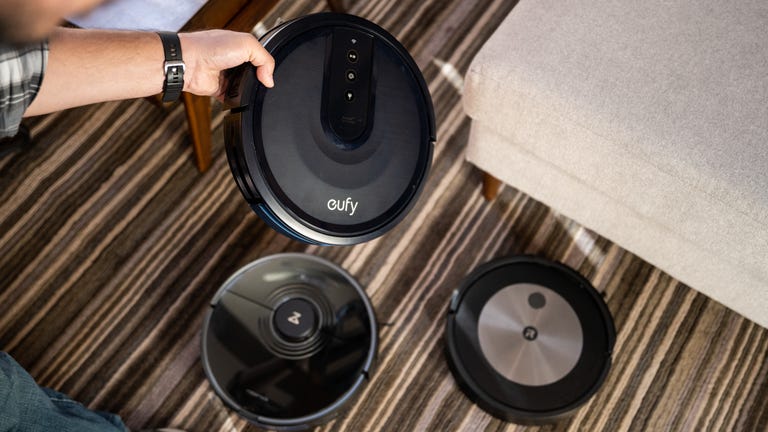Robot vacuums are crafty little inventions that automate cleaning your floors, much like robot lawn mowers are starting to do for our lawns. For the most part, robot vacuums are independent: These devices avoid getting wrapped up in cords, mop floors and navigate around pet waste — all on their own. Robot vacuums have several benefits, too. They offer a convenient, hands-free solution that gives you time back to do the things you love, and they can fit into any lifestyle, budget and home size. But they aren’t entirely self-sufficient. Every now and then, we need to help our vacuuming robots with a little maintenance.
With all the cleaning these devices do, there is bound to be some build-up of dirt from time to time. Brushes get pet hair tangled in them, sensors get dusty, charging points get gunked up and other nooks and crannies need tending to. With just a few minutes every so often, your robot vacuum will be able to keep your home’s floors clean for a long time.
You’ll need to do some extra maintenance if you want your robot vacuum to work properly and pick up as much dirt as possible instead of merely pushing it around. Specifically, you’ll want to focus on the upkeep of the wheels, main brush and side brushes of the robot vacuum. I connected with Ryan Stocking, Roomba product manager at iRobot, via email to get some expert-approved tips for caring for your trusty robot vac.
For more vacuum cleaning tips, check out these five ways to help your robot vacuum even better. There’s also our guide to help you choose between buying a robot or a cordless vacuum, or if you just want the cheapest vacuum we recommend.
Why do you need to clean your robot vacuum?
Isn’t the whole point of a vacuum that it does the cleaning? While it may be frustrating to have to clean your cleaning tool, regular maintenance has serious benefits; principally, increasing the longevity of your device’s efficiency. We all know the feeling of firing up a once-great vacuum only to find it’s become a relic of its former self, but there are ways to mitigate that.
The lifespan of a robot vacuum varies depending on the frequency of use, floor conditions and importantly, user maintenance. With proper care and cleaning, your robot vacuum can last a long time, according to Stocking.
Vacuum cleaners last about eight years, according to a Consumer Reports survey, but the lifespan can vary to 10 or more years based on how often you use your vacuum and how regularly you maintain it. If you’re unsure of when to replace your vacuum, follow our guide for warning signs to know if it’s time to buy or upgrade to a new one.
How to clean your robot vacuum
If you’re unsure of where to start cleaning your robot vac, it’s recommended that you reference the maintenance guide provided by the manufacturer. Your specific robot vacuum model may require specific care. There is a fairly uniform cleaning routine needed no matter the brand or style
“Generally, maintenance includes cleaning or replacing air filters, inspecting and cleaning the brushes and rollers, and occasionally wiping down sensors located on the bottom of the robot, such as the cliff detect sensors and charging contacts,” Stocking stated. Modern, Wi-Fi-connected robot vacuums can also provide maintenance tips and reminders via the companion app, even offering health status updates on various components, such as filters and roller brushes.”

Every so often, you’ll need to deep clean your robot vacuum’s brushes.
How often should you clean out your robot vacuum?
Your robot vac likely came with a guide on the recommended frequency of cleaning procedures, so be sure to reference that first, but the timelines are usually straightforward and consistent from model to model.
The frequency for robot vacuum maintenance procedures ranges:
- Daily: Emptying the bin, checking wheels for stuck debris.
- Weekly: Cleaning brush rolls and wheels.
- Monthly: Charging contacts and cliff sensors; removing and deep cleaning the brushes.
Stocking said iRobot specifically provides illustrated guidance on how to perform common maintenance procedures, which are also available in the iRobot Home App. Other robot vac brands like Dreametech, Roborock and Eufy also provide extensive usual manuals that cover how best you should upkeep and maintain your device.
How to care for robot vacuum wheels
When robot vacuum wheels get grimy, caked with dirt, or tangled with hair, they don’t turn as well, which means your little machine won’t move as efficiently and could even scratch your floors.
To keep the wheels spinning, check for any threads or hairs wrapped around the axles at least once a week. If there’s a buildup, you can use a utility knife or scissors to cut the debris free.
Next, check to see if anything is stuck to the wheels. If you have kids or pets, you know there’s no end to the sticky gunk that can potentially be run over and become caked to the bottom of a robot vacuum. If you find some, wipe the wheels down with a damp cloth. Clean wheels get better traction and prevent strain on the vacuum’s motor, which will ultimately extend the life of your machine.

If dusty, take a cloth to clean the underside and wheels of your robot vacuum.
How to clean a robot vacuum’s main brush
All robot vacuums — whether it’s a Roomba, Shark, Botvac or another popular brand — have at least one main brush that pulls dirt, lint and hair into the dust chamber. Like the wheels, the main brush can get entangled with hair, strings and other debris. After every use, check the main brush and cut away anything wrapped around it. Be careful not to cut the bristles as you work.
Once a month you should remove the main brush completely and hand wash it in warm water and mild dish soap. Give it a good rinse, then let it air dry fully before putting it back into the robot vacuum.
How to care for the robot vacuum side brush

Side brushes on robot vacuums are great at pulling debris from baseboards and can get hair tangled around them sometimes.
The side brushes on a robot vacuum are smaller than the main brush and are tasked with pulling debris into the main brush’s reach. These smaller brushes will need some extra care to keep working well, too.
After a while, you may notice that these brushes can become warped or even tangled. Luckily, you can straighten them back out without much effort.
Here’s a little hack I’ve worked out over the years: Simply heat the plastic bristles for a few seconds with a hair dryer set on high. Once they’re warm, coax the bristles back into position with your fingers. Hold them in position for a few seconds until they cool, which will set them back in place.
The bottom line
Whether you work from home, travel frequently, live alone or with a family and pets, robot vacuums are a convenient addition to your daily cleaning routine. They can make life so easy, but only if you’re willing to put in a little work each week to keep them running the right way. Simply put, a few minutes of extra maintenance every week or so will keep your robot vacuum humming along for years to come so you can make the very most of your robot vac investment.
For more vacuum tips, explore the best Roomba alternatives to keep your floors clean and the best robot vacuum deals available now. You can also explore the proper way to vacuum your floor.

Watch this: How to pick out a robot vacuum: Find the one that fits your needs and budget




















+ There are no comments
Add yours